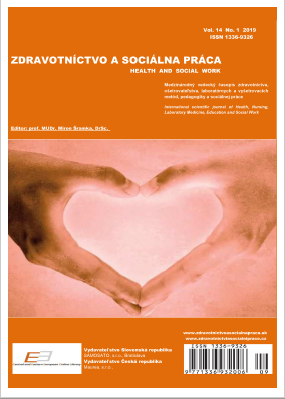VYUŽITIE 3D TLAČE V ZDRAVOTNÍCTVE – V OČNOM LEKÁRSTVE
IMPLEMENTATION OF 3D PRINTING IN MEDICINE – OPTHALMOLOGY
Author(s): Denisa Fialová, Peter Leško, Michal MarkoSubject(s): Evaluation research, Health and medicine and law, ICT Information and Communications Technologies
Published by: SAMOSATO, s. r. o., Bratislava, Slovensko - MAUREA, s. r. o., Plzeň, Česká republika
Keywords: 3D printing; 3D model; malignant uveal melanoma; stereotactic radiosurgery;
Summary/Abstract: Introduction: Uveal melanoma is the most common primary tumor of the eye in adults. It entails from 3 up to 3.5% of all malignant tumors. The survival rate is not increasing because in time of diagnosis, process is already disseminated, mostly in liver, lungs, and bones. The first sign could be abrupt, usually, its first manifestation is the loss of vision, the pain is not felt unless the tumor is exceeding out of the bulbus. Early diagnosis improves patient’s prognosis as well as an opportunity to choose different therapeutic approaches. Fluorescein angiography, slit lamp, 2D imaging methods like USG, CT and MR play an important role in making the diagnosis of uveal melanoma. PET/CT is mostly used in order to search for metastases. In history, mainstay of therapy was eye enucleation, nowadays radiotherapy is the first choice, for instance, stereotactic radiosurgery. 3D electronic model is used, made from CT images. In this article we are focusing on visualization of intraorbital structures, emphasizing the malignant uveal melanoma with real 3D models printed by 3D printer which helps to ameliorate treatment regimen and planning of stereotactic radiosurgery. Methods: In order to create 3D model of uveal melanoma, we need input information which entails tumor size and tumor localization. In planning of stereotactic radiosurgery we use CT and MRI images merging. We need to differentiate structures and highlight the ablative localization in each cut to minimize the radiation dose to adjacent structures. Next step is made in the computer program which counts the dose of radiation and exact localization of irradiation. Scans, which have been made during procedure planning, we use to create our 3D models. We use axial scans of the head, made in the exact day of radiosurgery in DICOM format, with a resolution of 1mm. We segment 3D model in program Invivo 6, which subsequently is processed in Simplify3D. We use two different colors of PLA filaments and FDM/FFF printer with two extruders.
Journal: International Journal of Health, New Technologies and Social Work
- Issue Year: 14/2019
- Issue No: 1
- Page Range: 10-15
- Page Count: 6
- Language: Slovak

